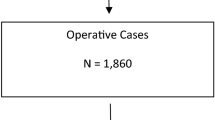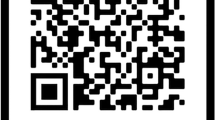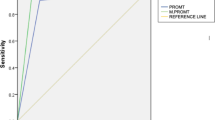Abstract
Purpose
This study sought to develop and internally validate a machine learning model to identify risk factors and quantify overall risk of secondary meniscus injury in a longitudinal cohort after primary ACL reconstruction (ACLR).
Methods
Patients with new ACL injury between 1990 and 2016 with minimum 2-year follow-up were identified. Records were extensively reviewed to extract demographic, treatment, and diagnosis of new meniscus injury following ACLR. Four candidate machine learning algorithms were evaluated to predict secondary meniscus tears. Performance was assessed through discrimination using area under the receiver operating characteristics curve (AUROC), calibration, and decision curve analysis; interpretability was enhanced utilizing global variable importance plots and partial dependence curves.
Results
A total of 1187 patients underwent ACLR; 139 (11.7%) experienced a secondary meniscus tear at a mean time of 65 months post-op. The best performing model for predicting secondary meniscus tear was the random forest (AUROC = 0.790, 95% CI: 0.785–0.795; calibration intercept = 0.006, 95% CI: 0.005–0.007, calibration slope = 0.961 95% CI: 0.956–0.965, Brier’s score = 0.10 95% CI: 0.09–0.12), and all four machine learning algorithms outperformed traditional logistic regression. The following risk factors were identified: shorter time to return to sport (RTS), lower VAS at injury, increased time from injury to surgery, older age at injury, and proximal ACL tear.
Conclusion
Machine learning models outperformed traditional prediction models and identified multiple risk factors for secondary meniscus tears after ACLR. Following careful external validation, these models can be deployed to provide real-time quantifiable risk for counseling and timely intervention to help guide patient expectations and possibly improve clinical outcomes.
Level of evidence
III.





Similar content being viewed by others
References
Alsoof D, McDonald CL, Kuris EO, Daniels AH (2022) Machine learning for the orthopaedic surgeon: uses and limitations. J Bone Joint Surg Am. https://doi.org/10.2106/jbjs.21.01305
Anderson AF, Anderson CN (2015) Correlation of meniscal and articular cartilage injuries in children and adolescents with timing of anterior cruciate ligament reconstruction. Am J Sports Med 43:275–281
Beynnon BD, Fleming BC, Labovitch R, Parsons B (2002) Chronic anterior cruciate ligament deficiency is associated with increased anterior translation of the tibia during the transition from non-weightbearing to weightbearing. J Orthop Res 20:332–337
Bien N, Rajpurkar P, Ball RL, Irvin J, Park A, Jones E et al (2018) Deep-learning-assisted diagnosis for knee magnetic resonance imaging: development and retrospective validation of MRNet. PLoS Med 15:e1002699
Brambilla L, Pulici L, Carimati G, Quaglia A, Prospero E, Bait C et al (2015) Prevalence of associated lesions in anterior cruciate ligament reconstruction: correlation with surgical timing and with patient age, sex, and body mass index. Am J Sports Med 43:2966–2973
Collins GS, Reitsma JB, Altman DG, Moons KG (2015) Transparent Reporting of a multivariable prediction model for individual prognosis or diagnosis (TRIPOD): the TRIPOD statement. Br J Surg 102:148–158
Hosmer DW, Lemeshow S, Sturdivant RX (2013) Applied Logistic Regressions, 3rd edn. Wiley, Hoboken, NJ
Greenwell BM, Boehmke BC, McCarthy AJ (2018) A simple and effective model-based variable importance measure. arXiv preprint arXiv:1805.04755
Haeberle HS, Helm JM, Navarro SM, Karnuta JM, Schaffer JL, Callaghan JJ et al (2019) Artificial intelligence and machine learning in lower extremity arthroplasty: a review. J Arthroplasty 34:2201–2203
Hagmeijer MH, Hevesi M, Desai VS, Sanders TL, Camp CL, Hewett TE et al (2019) Secondary meniscal tears in patients with anterior cruciate ligament injury: relationship among operative management, osteoarthritis, and arthroplasty at 18-year mean follow-up. Am J Sports Med 47:1583–1590
Hughes JD, Hughes JL, Bartley JH, Hamilton WP, Brennan KL (2017) Infection rates in arthroscopic versus open rotator cuff repair. Orthop J Sports Med 5:2325967117715416
Huque MH, Carlin JB, Simpson JA, Lee KJ (2018) A comparison of multiple imputation methods for missing data in longitudinal studies. BMC Med Res Methodol 18:168–168
Kunze KN, Polce EM, Clapp IM, Alter T, Nho SJ (2022) Association between preoperative patient factors and clinically meaningful outcomes after hip arthroscopy for femoroacetabular impingement syndrome: a machine learning analysis. Am J Sports Med. https://doi.org/10.1177/036354652110675463635465211067546
Lindanger L, Strand T, Mølster AO, Solheim E, Fischer-Bredenbeck C, Ousdal OT et al (2022) Predictors of osteoarthritis development at a median 25 years after anterior cruciate ligament reconstruction using a patellar tendon autograft. Am J Sports Med 50:1195–1204
Lu Y, Lavoie-Gagne O, Forlenza EM, Pareek A, Kunze KN, Forsythe B et al (2021) Duration of care and operative time are the primary cost drivers after ambulatory hip arthroscopy: a machine learning analysis. Arthroscopy. https://doi.org/10.1016/j.arthro.2021.12.012
Lu Y, Pareek A, Wilbur RR, Leland DP, Krych AJ, Camp CL (2021) Understanding anterior shoulder instability through machine learning: new models that predict recurrence, progression to surgery, and development of arthritis. Orthop J Sports Med 9:23259671211053330
Luo W, Phung D, Tran T, Gupta S, Rana S, Karmakar C et al (2016) Guidelines for developing and reporting machine learning predictive models in biomedical research: a multidisciplinary view. J Med Internet Res 18:e323
Manske RC, Prohaska D, Lucas B (2012) Recent advances following anterior cruciate ligament reconstruction: rehabilitation perspectives: critical reviews in rehabilitation medicine. Curr Rev Musculoskelet Med 5:59–71
Moons KG, Donders RA, Stijnen T, Harrell FE Jr (2006) Using the outcome for imputation of missing predictor values was preferred. J Clin Epidemiol 59:1092–1101
Nagelli CV, Hewett TE (2017) Should return to sport be delayed until 2 years after anterior cruciate ligament reconstruction? Biological and functional considerations. Sports Med 47:221–232
Palmieri-Smith RM, Strickland M, Lepley LK (2019) Hamstring muscle activity after primary anterior cruciate ligament reconstruction-a protective mechanism in those who do not sustain a secondary injury? A preliminary study. Sports Health 11:316–323
Paterno MV (2017) Non-operative care of the patient with an ACL-deficient knee. Curr Rev Musculoskelet Med 10:322–327
Pedersen AB, Mikkelsen EM, Cronin-Fenton D, Kristensen NR, Pham TM, Pedersen L et al (2017) Missing data and multiple imputation in clinical epidemiological research. Clin Epidemiol 9:157–166
Ramkumar PN, Karnuta JM, Haeberle HS, Rodeo SA, Nwachukwu BU, Williams RJ 3rd (2021) Effect of preoperative imaging and patient factors on clinically meaningful outcomes and quality of life after osteochondral allograft transplantation: a machine learning analysis of cartilage defects of the knee. Am J Sports Med 49:2177–2186
Raschka S (2018) Model evaluation, model selection, and algorithm selection in machine learning. ArXiv abs/1811.12808
Ribeiro MT, Singh S, Guestrin C (2016) Model-agnostic interpretability of machine learning. arXiv preprint arXiv:1606.05386
Rizk B, Brat H, Zille P, Guillin R, Pouchy C, Adam C et al (2021) Meniscal lesion detection and characterization in adult knee MRI: A deep learning model approach with external validation. Phys Med 83:64–71
Sanders TL, Kremers HM, Bryan AJ, Fruth KM, Larson DR, Pareek A et al (2016) Is anterior cruciate ligament reconstruction effective in preventing secondary meniscal tears and osteoarthritis? Am J Sports Med 44:1699–1707
Snoeker BA, Zwinderman AH, Lucas C, Lindeboom R (2015) A clinical prediction rule for meniscal tears in primary care: development and internal validation using a multicentre study. Br J Gen Pract 65:e523-529
Sri-Ram K, Salmon LJ, Pinczewski LA, Roe JP (2013) The incidence of secondary pathology after anterior cruciate ligament rupture in 5086 patients requiring ligament reconstruction. Bone Joint J 95-b:59–64
Stekhoven DJ, Bühlmann P (2012) MissForest–non-parametric missing value imputation for mixed-type data. Bioinformatics 28:112–118
Sterne JAC, White IR, Carlin JB, Spratt M, Royston P, Kenward MG et al (2009) Multiple imputation for missing data in epidemiological and clinical research: potential and pitfalls. BMJ 338:b2393
Steyerberg EW, Moons KG, van der Windt DA, Hayden JA, Perel P, Schroter S et al (2013) Prognosis research strategy (PROGRESS) 3: prognostic model research. PLoS Med 10:e1001381
Stone AV, Marx S, Conley CW (2021) Management of partial tears of the anterior cruciate ligament: a review of the anatomy, diagnosis, and treatment. J Am Acad Orthop Surg 29:60–70
Thomas AC, Wojtys EM, Brandon C, Palmieri-Smith RM (2016) Muscle atrophy contributes to quadriceps weakness after anterior cruciate ligament reconstruction. J Sci Med Sport 19:7–11
Van Buuren S (2012) Flexible imputation of missing data. CRC Press, Boca Raton, FL
van der List JP, Mintz DN, DiFelice GS (2017) The location of anterior cruciate ligament tears: a prevalence study using magnetic resonance imaging. Orthop J Sports Med 5:2325967117709966
Acknowledgements
The authors would like to acknowledge the support from the Foderaro-Quattrone Musculoskeletal-Orthopaedic Surgery Research Innovation Fund. This study was partially funded by the following: National Institute of Arthritis and Musculoskeletal and Skin Diseases for the Musculoskeletal Research Training Program (T32AR56950). Its contents are solely the responsibility of the authors and do not necessarily represent the official views of the NIH. This study used the resources of the Rochester Epidemiology Project (REP) medical records-linkage system, which is supported by the National Institute on Aging (NIA; AG 058738), by the Mayo Clinic Research Committee, and by fees paid annually by REP users. The content of this article is solely the responsibility of the authors and does not represent the official views of the National Institutes of Health (NIH) or the Mayo Clinic.
Author information
Authors and Affiliations
Corresponding author
Ethics declarations
Conflict of interest
Authors KJ, SET, YL, and AMA have nothing to disclose. Author MJS reports grants, personal fees, and other from Arthrex, Inc. and grants from Stryker, outside the submitted work; and American Journal of Sports Medicine: Editorial or governing board. Author DBF reports grants and other from JRF, personal fees and other from Smith & Nephew, outside the submitted work; and Cartilage: Editorial or governing board. Author CLC reports personal fees and non-financial support from Arthrex, personal fees and non-financial support from Zimmer Biomet, non-financial support from Stryker Corporation, and personal fees from Gemini Inc.. Author AJK reports grants from Aesculap/B. Braun, grants and other from Arthrex, Inc., grants from Arthritis Foundation, grants from Ceterix, grants from Histogenics, other from JRF Ortho and Vericel, grants from DJO LLC, other from Responsive Arthroscopy, outside the submitted work, and American Journal of Sports Medicine: Editorial or governing board, ICRS: Board or committee member, ISAKOS: Board or committee member, Minnesota Orthopedic Society: board or committee member, Musculoskeletal Transplantation Foundation: board or committee member.
Additional information
Publisher's Note
Springer Nature remains neutral with regard to jurisdictional claims in published maps and institutional affiliations.
Rights and permissions
Springer Nature or its licensor holds exclusive rights to this article under a publishing agreement with the author(s) or other rightsholder(s); author self-archiving of the accepted manuscript version of this article is solely governed by the terms of such publishing agreement and applicable law.
About this article
Cite this article
Jurgensmeier, K., Till, S.E., Lu, Y. et al. Risk factors for secondary meniscus tears can be accurately predicted through machine learning, creating a resource for patient education and intervention. Knee Surg Sports Traumatol Arthrosc 31, 518–529 (2023). https://doi.org/10.1007/s00167-022-07117-w
Received:
Accepted:
Published:
Issue Date:
DOI: https://doi.org/10.1007/s00167-022-07117-w




